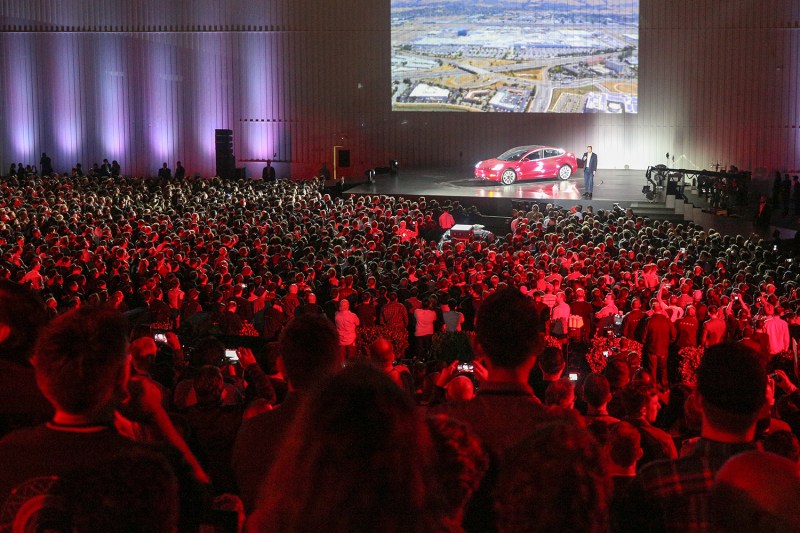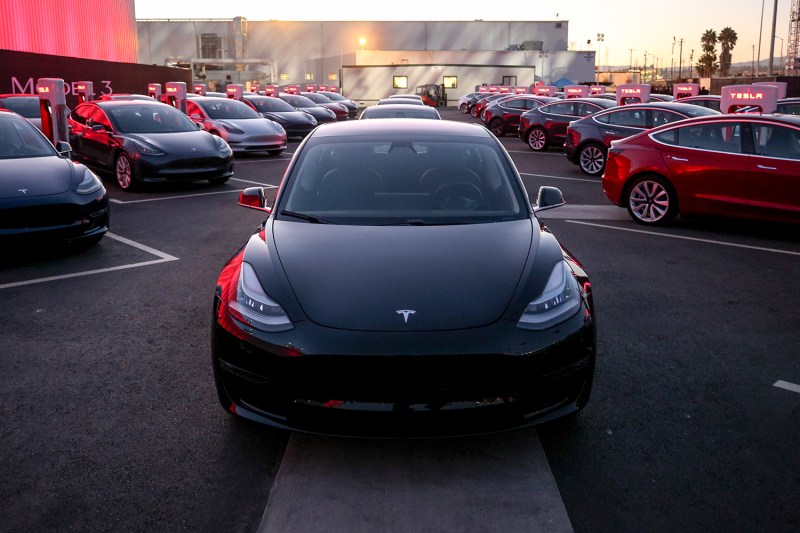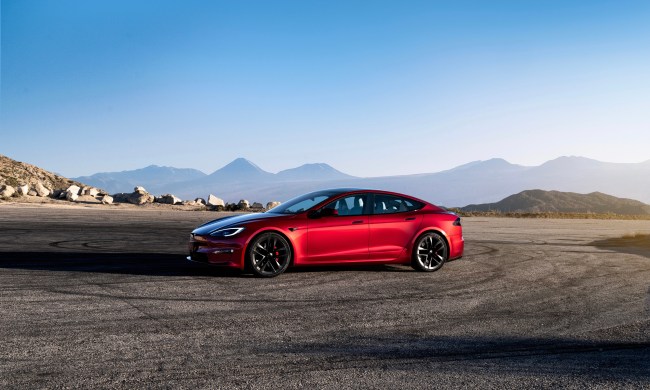Elon Musk is a hype wizard. He sends out a Tweet and the internet and his fans alight from the fires his words cause. He knows how to pique the public’s interest — it’s the reason why 400,000-plus people put a deposit down on a Model 3 when the billionaire tech-mogul announced the car two years ago. It was the fulfillment of a previous promise to build a mass-market, affordable-for-the-masses electric car that’d upset the entire industry.
Musk proclaimed the Model 3 would be $35,000 and debut the following year. And indeed, the Model 3 did debut to much acclaim, or much consternation, depending on the build date. But what’s important was that the Model 3 debuted as a $75,000, performance-oriented BMW M-fighter, a far cry from Musk’s car-for-the-proletariat. Now, after months being on sale, and a handful of lower-priced iterations, Tesla has begun to close the gap between what it and Musk promised and what it’s been actually producing with a drop in Model 3’s price to $42,900. Yet, if you looked at some news headlines, the $35,000 Model 3 is already here. So what gives and why does the faux price tag possibly spell a looming disaster?

The actual price and quoted price by Tesla’s top exec is understandably confusing, as well as irritating for those that are still on Tesla’s lower-priced Model 3 waitlist. The suspect pricing is a result of Elon and Tesla’s trademarked “math,” which includes reduced tax credits, as well as Tesla’s own projected yearly fuel savings calculations. With just the tax credit included, which went from $7,500 to $3,750, that only sees the Model 3 come down to $39,150, though that credit will be reduced further in July 2019.
If you looked at some news headlines, the $35,000 Model 3 is already here. So what gives and why does the faux price tag possibly spell a looming disaster?
As for fuel savings, which brings the price down to the theoretical $35,000, Tesla’s math has been proven to be wildly inaccurate in the past. Even given the benefit of the doubt, Tesla’s marketing isn’t exactly honest, which will likely infuriate those still waiting for their car. However, more importantly, this price reduction likely goes directly to Tesla’s ability to stay afloat.
As mentioned earlier, when Tesla announced the Model 3 and opened up the company’s ordering list to the public, people went nuts. Tesla had hyped the introductory electric vehicle as a $35,000 car and saw 400,000 people slap $1,000 deposits down. This wasn’t only a vote of confidence in the electric vehicle company by the public, but the announcement and subsequent orders aided Tesla when the company was in the thick of production hell for the Model X SUV. The ludicrous falcon doors’ design was causing Tesla a massive headache producing and spending boatloads of cash to rectify. As such, Tesla was low on cash reserves and couldn’t get production up to speed for the Model X.
Tesla needed money and a publicity win after the growing consternation from Model X buyers waiting for their cars. Musk succeeded with the Model 3’s announcement and those subsequent deposits. Yet, what’s become worrying is that ever since, Tesla has used this method of an announcement of a new vehicle or product to buoy its coffers when its reserves start to dwindle in the face of either production or sales adversity. Which brings us back to the price drop.
The go-to method of announce-and-get-deposits has put Tesla in a pickle.
Why make the claim now that the $35,000 Model 3 is ready when it really isn’t? Their go-to method of announce-and-get-deposits has put Tesla in a pickle. While the deposits put down on the Model 3 were numerous and saw the company’s coffers expand, it’s become a double-edged sword as those who put those deposits down for their base $35,000 Model 3 have begun asking where the car is. Tesla has sold as many higher-priced Model 3s as it can; only the base buyers are left. And with a growing clamor for the base car, Tesla has been put in an awkward position. Either deliver the car promised, or more worryingly for Tesla, deliver a refund to those asking, a percentage that’s apparently growing in number.

That’s something the company just can’t afford presently having only staved off bankruptcy late last year by the skin of its teeth. Add Elon’s penchant for ill-advised tweets and statements — i.e. the startling tweet about taking the company private which resulted in the SEC leveling a $20 million dollar fine upon Musk himself, as well as another $20 million on the company — or the host of OSHA violations recently revealed, backorders on parts, labor issues concerning deliveries, as well as the continued production issues that plague the automaker, and you get a company on unstable ground. As such, the price drop, though not truly constituting the delivery of the fabled $35,000, will hopefully help Tesla in the short term as it figures out its most pressing issue for the Model 3; as of this writing, Tesla spends $38,000 to build each Model 3. Not exactly a financially viable model.
So the question becomes, can Tesla and Musk weather the storm? That’s still unclear, but as for right now, Tesla has still failed to deliver on the $35,000 Model 3 promise. If Tesla can’t get production costs down and continues to see early adopters and those deposits flee, especially with the host of other electric vehicles coming to market for around $35,000, then its future looks bleak. Personally, I’m pulling for the company and its employees as it kickstarted a pro-environmental wave throughout the automotive industry. Something that benefits us all.






